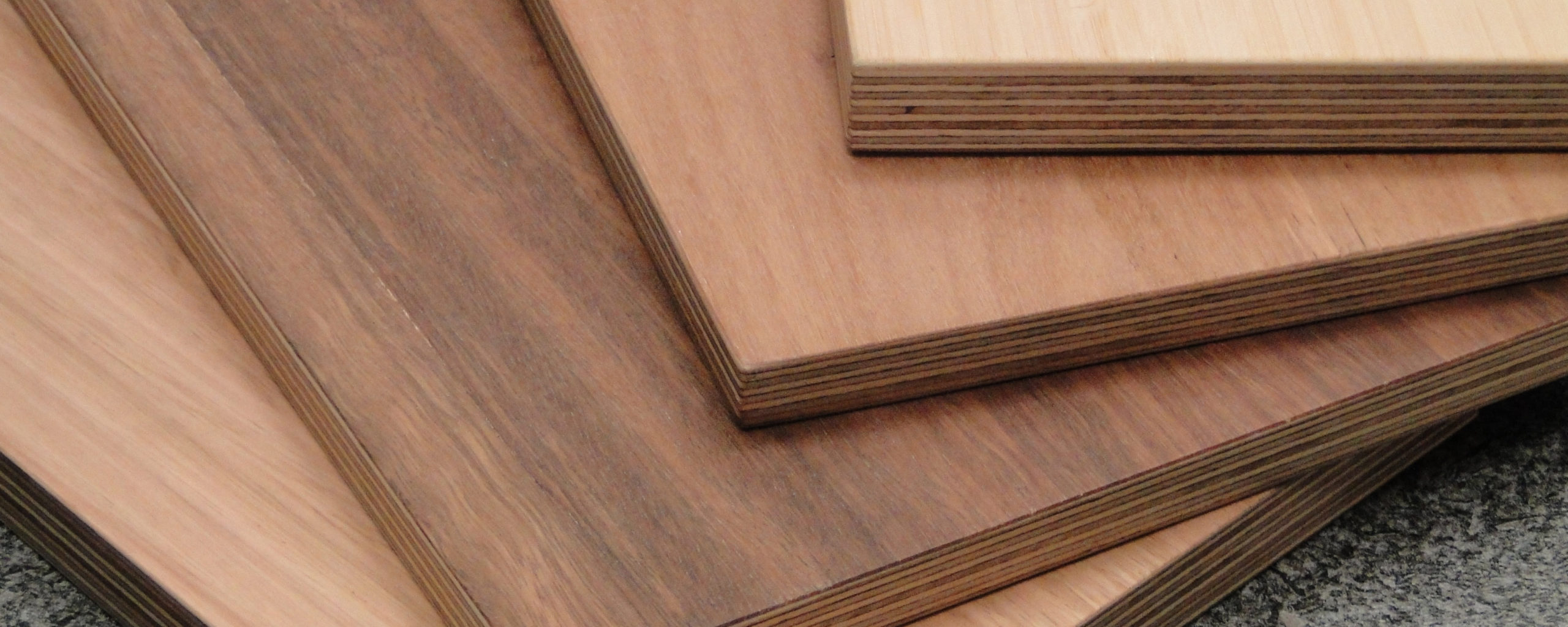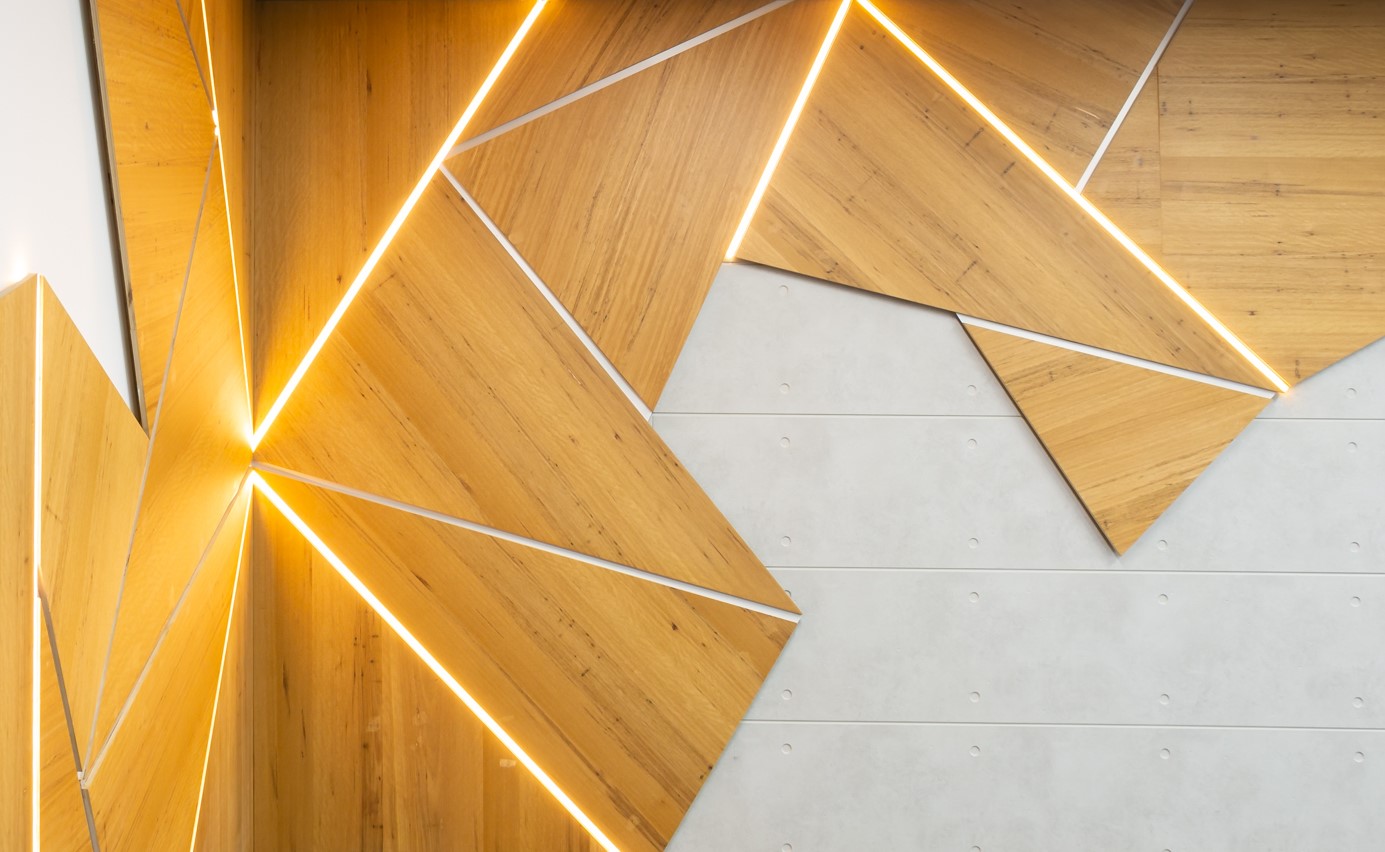09—12—2016
Is All Timber Veneer Board Created Equal?
TIMBER VENEER BOARD HAS BEEN AROUND FOR MANY YEARS AND IS PRODUCED IN LARGE VOLUMES THESE DAYS.
There are many steps involved in the production of finished panels and these are generally embraced by three main industries:
1.The actual veneer is manufactured from the raw log and this is the most technical part of the whole process. It is important to peel the veneer off the log very thinly (down to 0.3mm thick can be achieved) while retaining the veneer in one piece
2.Then there are the companies who manufacture the substrate which the veneer is pressed onto as either MDF, Particleboard, Bendy Ply, Blockboard or Plywood
3.Thirdly, there are the companies who press the veneer onto the required substrate.
PEELING LOGS INTO VENEERS IS TYPICALLY DONE IN ONE OF TWO WAYS
Logs are either ‘rotary’ peeled where the whole log spins in a large lathe and the veneer comes off in one large length the width of the log being peeled or else the log is sliced across its face resulting in veneer strips up to 300mm wide. When the log is sliced, there are two main ways for this to be done depending on how the log or flitch is placed in the slicer and with the finished grain having a different ‘look’.
THE DIFFERENCE BETWEEN ‘QUARTER-CUT’ AND ‘CROWN-CUT’ VENEERS
Slicing at right-angles to the growth rings produces ‘Quarter-cut’ veneer and gives a straight-line pattern, whereas when the timber is sliced parallel to the growth rings you get ‘Crown-cut’ veneer which is more figured with a crown or cathedral type effect.
WHERE ARE VENEERS TYPICALLY PEELED?
Unfortunately for Australia, a lot of the veneer peeling has now been taken off-shore with only one or two companies still doing it commercially in Australia. Most of the commercially available veneer today is peeled in China, even though the logs are grown in Australia or America. Some companies are getting the veneer lay-ons made up in China, while others are importing the veneer and making up the lay-ons here in Australia.
LARGELY THOUGH, WHAT DETERMINES THE QUALITY OF THE TIMBER VENEER PANEL IS THE WAY IT IS PRESSED AND THE QUALITY STANDARD WHICH THE PRESSING COMPANY UPHOLDS.
Here at Maxiply, we work closely with our supplier who has the most modern up-to-date veneer pressing line in Australia and we deliver what we believe to be the best quality Natural Timber Veneer panels currently available commercially. We also believe that ‘Down Grade Back’ (DGB) is just that – while this may mean that the veneer will be the same species, it could have thinner veneer strips, lower grade veneer, discolouration and other imperfections which makes the veneer not meet a Select type grade.
Maxiply does not supply veneer which has large patches in the DGB face – we believe this is packing case grade and not acceptable for use on decorative applications.
SO IN SHORT – NO, NOT ALL VENEER IS CREATED EQUAL!
Contact Maxiply – your premier Plywood and Natural Timber Veneer supplier to find out how we can help you find the perfect finish for your project. Call 1300 791 741.


09—12—2016
TIMBER VENEER BOARD HAS BEEN AROUND FOR MANY YEARS AND IS PRODUCED IN LARGE VOLUMES THESE DAYS.
There are many steps involved in the production of finished panels and these are generally embraced by three main industries:
1.The actual veneer is manufactured from the raw log and this is the most technical part of the whole process. It is important to peel the veneer off the log very thinly (down to 0.3mm thick can be achieved) while retaining the veneer in one piece
2.Then there are the companies who manufacture the substrate which the veneer is pressed onto as either MDF, Particleboard, Bendy Ply, Blockboard or Plywood
3.Thirdly, there are the companies who press the veneer onto the required substrate.
PEELING LOGS INTO VENEERS IS TYPICALLY DONE IN ONE OF TWO WAYS
Logs are either ‘rotary’ peeled where the whole log spins in a large lathe and the veneer comes off in one large length the width of the log being peeled or else the log is sliced across its face resulting in veneer strips up to 300mm wide. When the log is sliced, there are two main ways for this to be done depending on how the log or flitch is placed in the slicer and with the finished grain having a different ‘look’.
THE DIFFERENCE BETWEEN ‘QUARTER-CUT’ AND ‘CROWN-CUT’ VENEERS
Slicing at right-angles to the growth rings produces ‘Quarter-cut’ veneer and gives a straight-line pattern, whereas when the timber is sliced parallel to the growth rings you get ‘Crown-cut’ veneer which is more figured with a crown or cathedral type effect.
WHERE ARE VENEERS TYPICALLY PEELED?
Unfortunately for Australia, a lot of the veneer peeling has now been taken off-shore with only one or two companies still doing it commercially in Australia. Most of the commercially available veneer today is peeled in China, even though the logs are grown in Australia or America. Some companies are getting the veneer lay-ons made up in China, while others are importing the veneer and making up the lay-ons here in Australia.
LARGELY THOUGH, WHAT DETERMINES THE QUALITY OF THE TIMBER VENEER PANEL IS THE WAY IT IS PRESSED AND THE QUALITY STANDARD WHICH THE PRESSING COMPANY UPHOLDS.
Here at Maxiply, we work closely with our supplier who has the most modern up-to-date veneer pressing line in Australia and we deliver what we believe to be the best quality Natural Timber Veneer panels currently available commercially. We also believe that ‘Down Grade Back’ (DGB) is just that – while this may mean that the veneer will be the same species, it could have thinner veneer strips, lower grade veneer, discolouration and other imperfections which makes the veneer not meet a Select type grade.
Maxiply does not supply veneer which has large patches in the DGB face – we believe this is packing case grade and not acceptable for use on decorative applications.
SO IN SHORT – NO, NOT ALL VENEER IS CREATED EQUAL!
Contact Maxiply – your premier Plywood and Natural Timber Veneer supplier to find out how we can help you find the perfect finish for your project. Call 1300 791 741.






